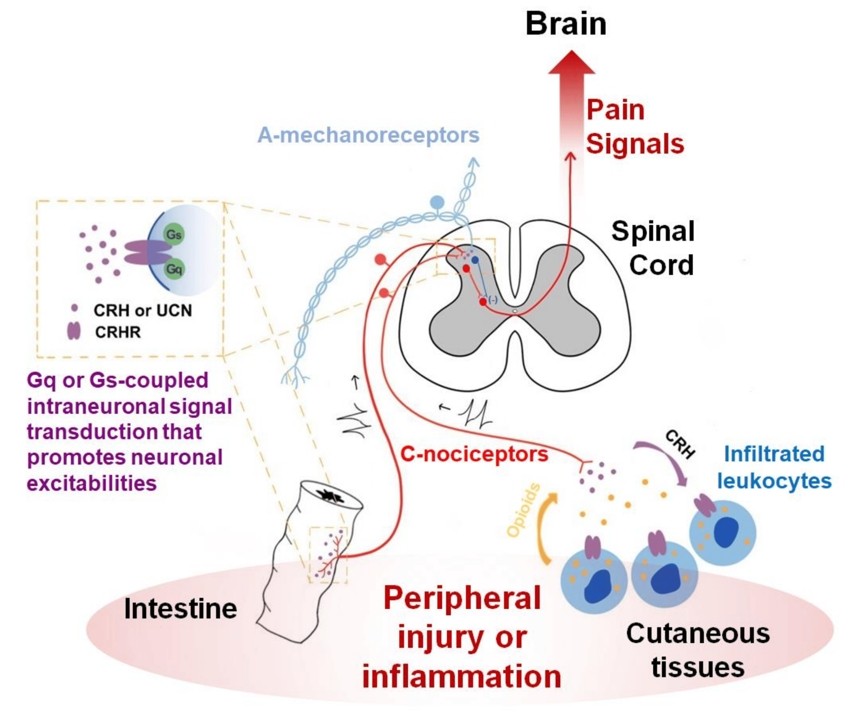Hi-Affi™ CRHR2 (CRF2) Stable Cell Line
G protein-coupled receptors (GPCRs) are the largest superfamily of cell surface receptors and are involved in numerous physiological and pathological processes. Currently, they are considered as one of the most attractive drug target classes. It is known that G protein can affect the production of hundreds or even thousands of second messenger molecules (e.g. Ca2+, cAMP, DAG). Based on the idea that GPCR activities can be monitored via second messenger signaling molecules, Creative Biolabs now launches a unique Hi-Affi™ GPCR stable cell line platform incorporated with second-messenger-reactive biosensors for early-stage GPCR function studies. Particularly, we now present our global clients this well-validated Hi-Affi™ CRHR2 GPCR stable cell line.
Introduction to CRHR2 (CRF2) Receptor
Corticotropin-releasing hormone (CRH) is a 41-amino-acid peptide that was first isolated from the sheep hypothalamus that plays a central role in the coordination of behavioral, cardiovascular, autonomic, immune and endocrine responses to stressful stimuli. Their actions are mediated through activation of two types of G-protein-coupled receptors termed corticotropin-releasing hormone receptor 1 (CRHR1) and corticotropin-releasing hormone receptor 2 (CRHR2).
 Fig.1 A conceptual diagram depicting the role of CRH and its receptors in the peripheral nociceptor-based circuit.1, 2
Fig.1 A conceptual diagram depicting the role of CRH and its receptors in the peripheral nociceptor-based circuit.1, 2
In most tissues, both CRHR1 and CRHR2 receptor couple to and activate Gs-proteins and stimulate intracellular cAMP levels. Through activation of protein kinase A and EPACs (Exchange proteins directly activated by cAMP), CRH-R agonists can activate a plethora of downstream intracellular effectors, such as GC, ERK1/2, NF-kB, ion channels, GSK-3b and tyrosine hydroxylase phosphorylation.
Hi-Affi™ CRHR2 (CRF2) Stable Cell Line
Hi-Affi™ CRHR2 stable cell line is developed by co-transfection of human corticotropin-releasing hormone receptor 2 (CRHR2) and cAMP-activated, membrane-associated fluorescent biosensor in U2OS cells. Upon CRHR2 motivation/inhibition, changes in cAMP will quickly lead to translocation of the biosensor (from plasma membrane to cytosolic vesicles). This way, CRHR2 activities can be monitored through cellular fluorescence alterations, which can be easily observed and quantified. This Hi-Affi™ CRHR2 stable cell line makes an ideal tool to assay compounds and characterize their functional potentials against CRHR2 in a convenient, efficient and high-throughput format.
Featured Advantages of Hi-Affi™ AVPR2 Stable Cell Lines
- Time- and cost-saving
- Simple operations, with no special requirements for reagents or equipment
- Compatible with high-throughput screenings
- No modifications/labeling of AVPR2 or downstream pathways, maintaining the native signaling events
In addition to CRHR2, Creative Biolabs now offers a wide range of Hi-Affi™ GPCR stable cell lines engineered with cAMP-activated biosensors, including but not limited to:
Besides, Creative Biolabs offers a variety of ready-to-use Hi-Affi™ GPCR cell line option to evaluate calcium-, DAG-related as well as multiplex pathway events of various GPCRs. We are also happy to establish a specific cell line upon custom request. Please contact us for more information and a detailed quote.
References
- Zheng, Haiyan, et al. "The role of corticotropin-releasing hormone at peripheral nociceptors: implications for pain modulation." Biomedicines 8.12 (2020): 623.
- under Open Access License CC BY 4.0, without modification.
For Research Use Only.
